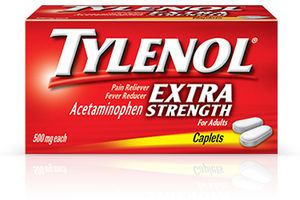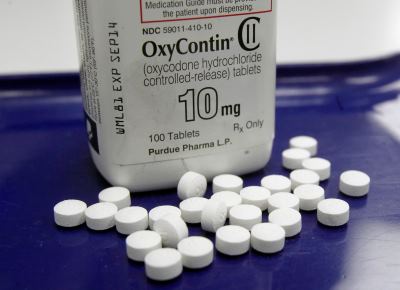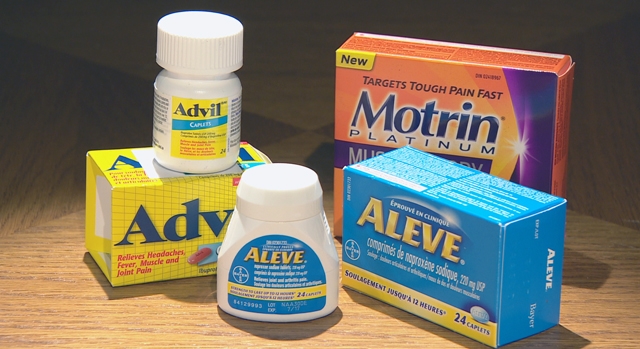If you’ve ever been treated for severe pain from surgery, an injury, or an illness, you know just how vital pain relief medications can be, but sometimes it is better to learn a bit more about the products you are consuming.
Pain relief treatments come in many forms and potencies, are available by prescription or over-the-counter (OTC), and treat all sorts of physical pain including that brought on by chronic conditions, sudden trauma, and cancer.
Pain relief medicines (also known as “analgesics” and “painkillers”) are regulated by the Food and Drug Administration (FDA). Some analgesics, including opioid analgesics, act on the body’s peripheral and central nervous systems to block or decrease sensitivity to pain. Others act by inhibiting the formation of certain chemicals in the body.
Among the factors health care professionals consider in recommending pain killers and prescription drugs are the cause and severity of the pain.
Types Of Pain Relievers
 OTC Medications
OTC Medications
These relieve the minor aches and pains associated with conditions such as headaches, fever, colds, flu, arthritis, toothaches, and menstrual cramps.
There are basically two types of OTC pain relievers: acetaminophen and non-steroidal anti-inflammatory drugs (NSAIDs).
Acetaminophen which is also known as Paracetamol, is an active ingredient found in more than 600 OTC and prescription medicines, including pain relievers, cough suppressants, and cold medications.
NSAIDs are common medications used to relieve fever and minor aches and pains. They include aspirin, naproxen, and ibuprofen, as well as many medicines taken for colds, sinus pressure, and allergies. They act by inhibiting an enzyme that helps make a specific chemical.
Prescription Medications
Typical prescription pain relief medicines include opioids and non-opioid medications.
Derived from opium, opioid drugs are very powerful products. They act by attaching to a specific “receptor” in the brain, spinal cord, and gastrointestinal tract. Opioids can change the way a person experiences pain, for this same reason a person can easily become addicted to them and this could end up being a very dangerous addiction that may even need assistance from rehabs
 Types of prescription opioid medications include
Types of prescription opioid medications include
- Morphine, which is often used before and after surgical procedures to alleviate severe pain
- Oxycodone, which is also often prescribed for moderate to severe pain
- Codeine, which comes in combination with acetaminophen or other non-opioid pain relief medications and is often prescribed for mild to moderate pain
- Hydrocodone, which comes in combination with acetaminophen or other non-opioid pain relief medications and is prescribed for moderate to moderately severe pain
FDA has recently notified makers of certain opioid drugs that these products will need to have a Risk Evaluation and Mitigation Strategy (REMS) to ensure that the benefits continue to outweigh the risks.
Affected opioid drugs, which include brand name and generic products, are formulated with the active ingredients fentanyl, hydromorphone, methadone, morphine, oxycodone, and oxymorphone.
FDA has authority to require a REMS under the Food and Drug Administration Amendments Act of 2007.
Types of non-opioid prescription medications include ibuprofen and diclofenac, which treat mild to moderate pain.
Use Pain Relievers As Directed
Pain medications are safe and effective when used as directed. However, misuse of these products can be extremely harmful and even deadly.
Consumers who take pain relief medications must follow their health care professional’s instructions carefully. If a measuring tool is provided with your medicine, use it as directed.
Do not change the dose of your pain relief medication without talking to your doctor first.
Also, pain medications should never be shared with anyone else. Only your health care professional can decide if a prescription pain medication is safe for someone.
Here are other key points to remember.
With Acetaminophen:
- Taking a higher dose of Paracetamol than recommended will not provide more relief and can be dangerous.
- Too much can lead to liver damage and death. Risk for liver damage may be increased in people who drink three or more alcoholic beverages a day while using acetaminophen-containing medicines.
- Be cautious when giving acetaminophen to children. Infant drop medications can be significantly stronger than regular children’s medications. Read and follow the directions on the label every time you use a medicine. Be sure that your infant is getting the infants’ pain formula and your older child is getting the children’s pain formula.
With NSAIDs:
- Too much can cause stomach bleeding. This risk increases in people who are over 60 years of age, are taking prescription blood thinners, are taking steroids, have a history of stomach bleeding or ulcers, and/or have other bleeding problems.
- Use of NSAIDs can also cause reversible kidney damage. This risk may increase in people who are over 60 years of age, are taking a diuretic (a drug that increases the excretion of urine), have high blood pressure, heart disease, or pre-existing kidney disease.
With Opioids:
- Use of opioids can lead to drowsiness. Do not drive or use any machinery that may injure you, especially when you first start the medication.
- The dose of an opioid pain medication that is safe for you could be high enough to cause an overdose and death in someone else, especially children.
Know Active Ingredients in All Medications
 A specific area of concern with OTC pain medicines is when products sold for different uses have the same active ingredient. A cold and cough remedy may have the same active ingredient as a headache remedy or a prescription pain reliever.
A specific area of concern with OTC pain medicines is when products sold for different uses have the same active ingredient. A cold and cough remedy may have the same active ingredient as a headache remedy or a prescription pain reliever.
To minimize the risks of an accidental overdose, consumers should avoid taking multiple medications with the same active ingredient at the same time.
All OTC medicines must have all of their active ingredients listed on the package. For prescription drugs, the active ingredients are listed on the container label.
Talk with your pharmacist or another health care professional if you have questions about using OTC medicines, and especially before using them in combination with dietary supplements or other OTC or prescription medicines.
MISUSE AND ABUSE
Misuse and abuse of pain medications can be extremely dangerous. This is especially so in regard to opioids. These medications should be stored in a place where they cannot be stolen.
According to the National Institutes of Health, studies have shown that properly managed medical use of opioid analgesic compounds (taken exactly as prescribed) is safe, can manage pain effectively, and rarely causes addiction.
But the abuse of opioids is a significant public safety concern. Abusers ingest these drugs orally, and also crush the pills in order to snort or inject them.
Commonly abused opioid pain medicines include prescription drugs such as codeine, and the brand-name products Oxycontin (oxycodone), Vicodin (hydrocodone with acetaminophen), and Demerol (meperidine).
Addiction is just one serious danger of opioid abuse. A number of overdose deaths have resulted from snorting and injecting opioids, particularly the drug OxyContin, which was designed to be a slow-release formulation.
3 Steps to Using Opioids Safely
- Keep your doctor informed. Inform your health care professional about any past history of substance abuse. All patients treated with opioids for pain require careful monitoring by their health care professional for signs of abuse and addiction, and to determine when these analgesics are no longer needed.
- Follow directions carefully. Opioids are associated with significant side effects, including drowsiness, constipation, and depressed breathing depending on the amount taken. Taking too much could cause severe respiratory depression or death. Do not crush or break pills. This can alter the rate at which the medication is absorbed and lead to overdose and death.
- Reduce the risk of drug interactions. Don’t mix opioids with alcohol, antihistamines, barbiturates, or benzodiazepines. All of these substances slow breathing and their combined effects could lead to life-threatening respiratory depression.
This article appears on FDA’s Consumer Health Information Web page (www.fda.gov/consumer), which features the latest updates on FDA-regulated products. Sign up for free e-mail subscriptions at www.fda.gov/consumer/consumerenews.html.




